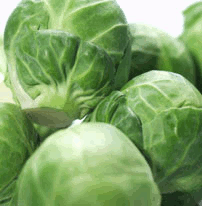Selecting the best scallops
To select the best scallops first find a store with a good reputation for having a fresh supply of fish and get to know a fishmonger (person who sells the fish) at the store so that you can have a trusted person from whom you can purchase your fish.
Since scallops are extremely perishable, they are usually shelled, washed and frozen, or packed in ice, as soon as they are caught. Fresh scallops should be white, firm and show no evidence of browning. Frozen scallops are best when they are solid and shiny, and the inside of their packaging is free of frost. If you are planning on freezing the scallops, make sure to ask the fishmonger whether they are fresh or defrosted (if it is not clearly marked) since you will need to cook previously frozen scallops before refreezing.
Whenever possible it is best to purchase displayed scallops rather than those that are already pre-packaged. Smell is a good indicator of freshness and it is difficult to detect smells through the plastic of pre-packaged fish. Once the fishmonger wraps and hands you the scallops, smell them through the paper wrapping and return it if it does not smell right.
The number of scallops you get per pound will depend on their size:
Sea scallops: 20-30 per pound
Bay scallops: 60-100 per pound
U.S. diver caught or farmed sea scallops and U.S. farm-raised bay scallops are your best choices for sustainability. These methods of production are environmentally sound and the scallops are typically not chemically treated. Sustainable species of scallops are those that can be sustained long-term without compromising their survival or the integrity of the ecosystem in which they live. U.S. farmed or diver caught sea scallops and U.S. farmed bay scallops are the most likely to be ecologically sound and chemical-free.
Sea scallops caught by dredging cause damage to the seafloor and is rated as purchase with ‘caution’ by the Monterey Bay Aquarium Seafood Watch. Bay scallops are often imported from China. Imported foreign-raised scallops may be treated with sodium tripolyphosphate. This preservative causes the scallops to absorb 25% more water, increasing the apparent weight and freshness of the scallops, however they will not have the rich sweet taste of untreated scallops.. Because there is little information regarding the environmental impact of this industry the Seafood Watch rates them as “Proceed with Caution”
Send us your favorite recipes using the World's Healthiest Foods, so we can share them with others!
This page was updated on: 2004-05-20 10:22:43
|





